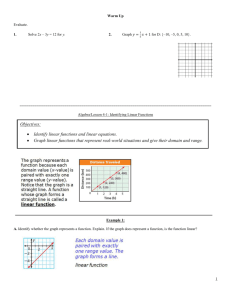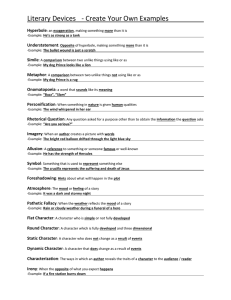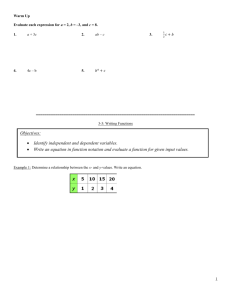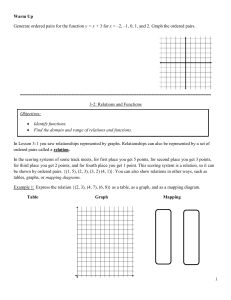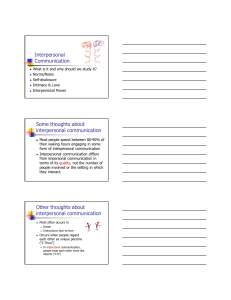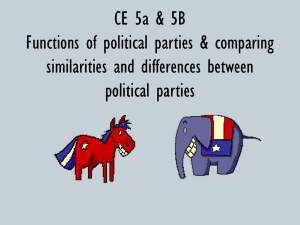File
advertisement
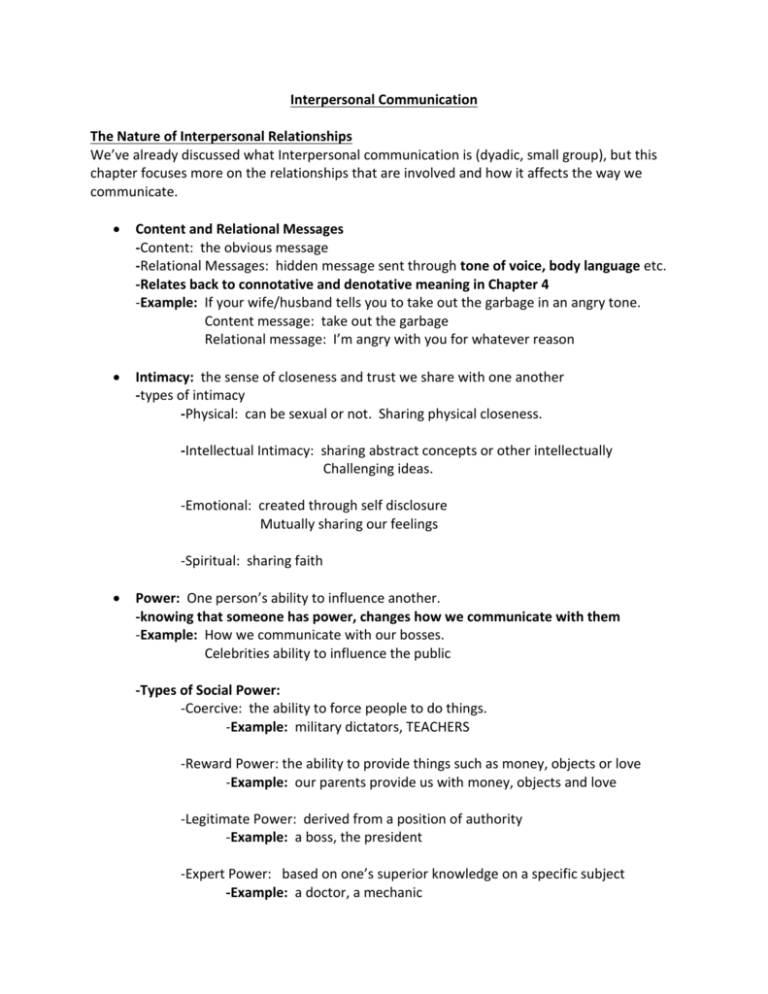
Interpersonal Communication The Nature of Interpersonal Relationships We’ve already discussed what Interpersonal communication is (dyadic, small group), but this chapter focuses more on the relationships that are involved and how it affects the way we communicate. Content and Relational Messages -Content: the obvious message -Relational Messages: hidden message sent through tone of voice, body language etc. -Relates back to connotative and denotative meaning in Chapter 4 -Example: If your wife/husband tells you to take out the garbage in an angry tone. Content message: take out the garbage Relational message: I’m angry with you for whatever reason Intimacy: the sense of closeness and trust we share with one another -types of intimacy -Physical: can be sexual or not. Sharing physical closeness. -Intellectual Intimacy: sharing abstract concepts or other intellectually Challenging ideas. -Emotional: created through self disclosure Mutually sharing our feelings -Spiritual: sharing faith Power: One person’s ability to influence another. -knowing that someone has power, changes how we communicate with them -Example: How we communicate with our bosses. Celebrities ability to influence the public -Types of Social Power: -Coercive: the ability to force people to do things. -Example: military dictators, TEACHERS -Reward Power: the ability to provide things such as money, objects or love -Example: our parents provide us with money, objects and love -Legitimate Power: derived from a position of authority -Example: a boss, the president -Expert Power: based on one’s superior knowledge on a specific subject -Example: a doctor, a mechanic -Referent Power: derived from people being able to identify with you -Example: Bill Clinton Stages of Relationship Development Initiating: making first contact. -safe, unoffensive conversation Experimenting: -more in-depth topics of conversation, but still small talk -some relationships never get past this point Intensifying: when people begin to express their feelings for each other verbally/nonverbally -beginning of “romantic” relationships, but friends can enter this stage too -begin thinking of themselves as a couple Integrating: when society sees two people as a couple -spends holidays together, meet families, may live together Bonding: “Wedding Phase” -can put pressure on couples Differentiating: couple feels the need to regain independence -develop hobbies and activities separate from each other -can cause tension if other partner feels threatened Circumscribing: partners avoid discussing problems -beginning of the end -less and less communication -extremely defensive communication Stagnating: going through the motions -couple doesn’t love each other anymore but stays together out of convenience Avoiding: physically avoiding each other -some people make excuses to not see each other Terminating: the end Self Disclosure Within Relationships Self Disclosure: the conscious decision to share with others -We can share high or low risk info Johari Window: Open Quadrant: what we knowingly share with others Blind Quadrant: what we unconsciously share with others Hidden Quadrant: what we hid from others Unknown: what we don’t know about ourselves and what others don’t see Benefits of Self-Disclosure - Increased understanding of ourselves and others - Learning the ability to express ourselves - An increased likelihood of people being open with you Cautions of Self-Disclosure - Caution is key when deciding what information to reveal to people Theories of Interpersonal Communication Interpersonal Needs Theory -William Schutz -People’s needs affect how we communicate -Needs: -Inclusion: being part of the group -Control: desire for power, influence and responsibility -Affection: desire for intimacy Cost Benefits Theory -John Thibaut and Harold Kelley -people choose to stay or exit a relationship based on the rewards the receive from the relationship -benefits: emotions, psychological, financial or physical Conflict within Relationships Factors that Contribute to Conflicts -Denial: refusing to acknowledge that a problem exists -can be frustrating if the other partner wants to solve the problem -Suppression: acknowledging that a problem exists, but minimizing its importance -we fear that it may be to painful to solve the problem -Aggression: trying to intimidate the other into a beneficial resolution -Status: when one partner is intimidated by another’s higher standing in society Improving Our Efforts to Resolve Conflict Deal With Feelings -figuring out what is making us angry, hurt or frustrated Find a Special Time to Meet -give each other time to think about the situation and then meet Use Perception Checking and Empathetic Listening Be Willing to Compromise

